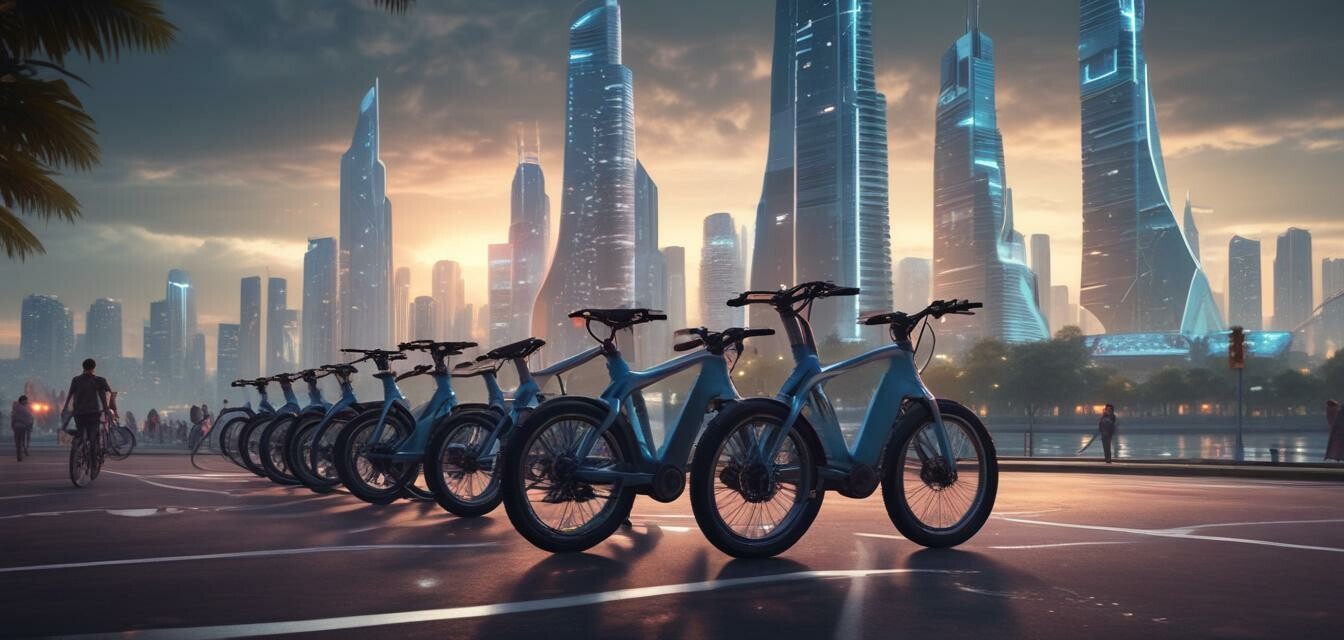
The Future of Electric Bikes: Predictions for 2025 and Beyond
- Increased adoption of electric bikes due to urbanization and sustainability efforts.
- Advancements in battery technology will lead to longer ranges and quicker charging times.
- Integration with smart technology will enhance user experience and safety.
- More diverse electric bike options tailored to different riding needs will emerge.
- Government initiatives and subsidies may further accelerate market growth.
As urbanization continues and the focus on sustainability grows, electric bikes (e-bikes) are positioned to transform transportation in cities around the world. With that in mind, this article explores the future of electric bikes, focusing on exciting predictions for 2025 and beyond. We'll peek into the advancements in technology, features, and the overall market growth that could shape the e-bike industry in the coming years.
Advancements in battery technology
The heart of any electric bike is its battery, and as we look to the future, significant improvements are anticipated in this area:
| Battery Technology | Expected Developments |
|---|---|
| Higher energy density | Batteries that hold more energy without significantly increasing size or weight. |
| Faster charging times | Technologies that allow batteries to charge in as little as one hour. |
| Longer lifespan | Batteries that can last for thousands of charge cycles without losing efficiency. |
Integration with smart technology
As technology advances, we can expect to see more smart features integrated into electric bikes:
- GPS tracking: Enhanced navigation and security features will allow riders to track their bikes in real-time.
- Smartphone connectivity: Integration with apps for ride statistics, maintenance reminders, and route planning.
- Automated safety features: Systems that detect potential hazards and provide alerts to riders.
These innovations will not only enhance the user experience but also improve the overall safety of urban cycling.
Diverse options catering to different needs
With the growing popularity of electric bikes, manufacturers are likely to expand their offerings to cater to various customer segments:
| Electric Bike Type | Description |
|---|---|
| Commuter e-bikes | Designed for urban commuting, typically featuring cargo racks and fenders. |
| Folding e-bikes | Compact models ideal for city dwellers with limited storage space. |
| Mountain e-bikes | Robust and durable bikes designed for off-road terrain. |
| Speed pedelecs | Bikes capable of reaching higher speeds, suitable for longer commutes. |
This diversity will make it easier for consumers to find the perfect e-bike that matches their lifestyle and commuting requirements. To explore specific types of bikes available now, check out our selections on Electric Bikes.
Market growth and governmental support
The e-bike market has been expanding at an impressive rate, and this trend is expected to continue. Factors contributing to this growth include:
- Government incentives: Many cities and countries are offering grants and subsidies to promote electric bike usage, making them more accessible to consumers.
- Environmental considerations: Increased awareness of the need for sustainable transportation solutions is driving consumers toward e-bikes.
- Urbanization trends: As more people move to cities, the demand for efficient and customizable commuting options increases.
For more insights on the impact of government policies on the cycling landscape, feel free to visit our News & Trends section.
The role of e-bikes in combating climate change
Electric bikes are poised to play a crucial role in addressing climate change:
- They produce zero emissions, making them an eco-friendly alternative to cars.
- By promoting cycling as an everyday mode of transportation, cities can reduce traffic congestion and air pollution.
As urban planning continues to prioritize sustainability, electric bikes will likely become integral to more cities' transportation strategies. The flexibility of e-bikes makes them especially appealing in densely populated urban areas.
Conclusion
The future of electric bikes is bright, and with continued advancements in technology and growing market acceptance, we can expect substantial changes by 2025 and beyond. Riders will have greater access to innovative features, diverse bike options, and a more sustainable transportation choice. Therefore, whether you're a seasoned cyclist or considering making the switch to an electric bike, it's worth keeping an eye on these exciting developments that could reshape our cycling landscape.
Pros
- Enhanced convenience for urban commuting.
- Reduced environmental impact compared to traditional vehicles.
- Promotes healthier lifestyles while minimizing effort.
Cons
- Higher initial costs compared to traditional bicycles.
- Potential battery lifespan concerns if not properly managed.
- Security issues related to theft, requiring better bike lock options.
Tips for choosing the right electric bike
- Determine your primary use: commuting, recreational riding, or off-road adventures.
- Consider battery range based on your travel needs.
- Check for weight and folding capabilities if storage is limited.
- Test ride several models to find the best fit for comfort and performance.